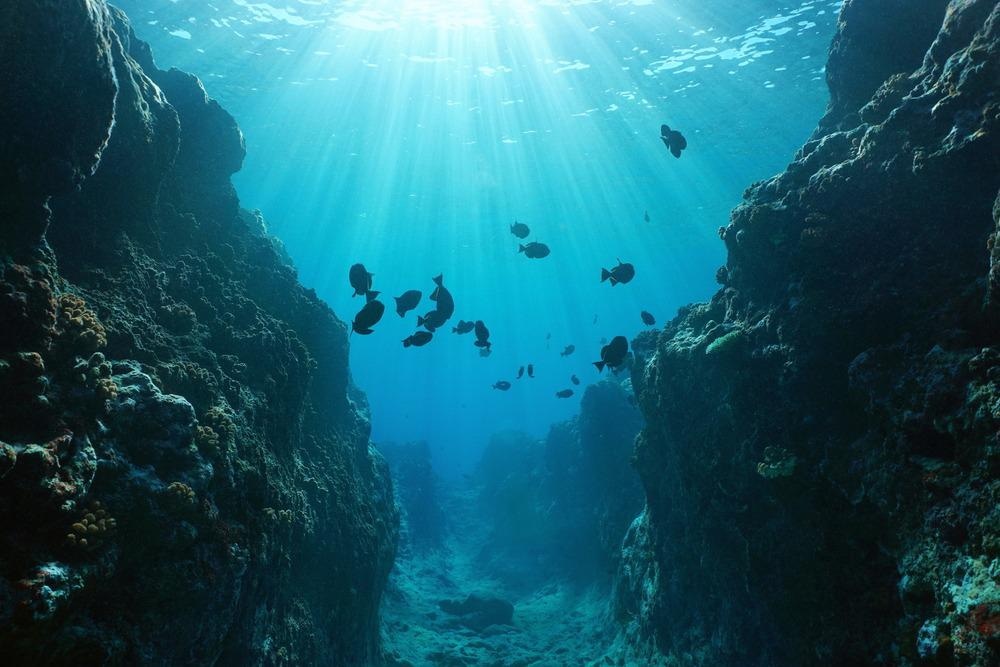Considering the importance of underwater imaging to help protect the marine environment, researchers from China have published their research in ACS Nano detailing the development of an aquatic multispectral computerized imaging technology based on a single-photodetector image enhancement technique and a (Sb2Se3) Antimony tri-selenide heterojunction photodiode.

Study: Underwater Multispectral Computational Imaging Based on a Broadband Water-Resistant Sb2Se3 Heterojunction Photodetector. Image Credit: Damsea/Shutterstock.com
Why Underwater Imaging is Important?
The investigation and conservation of ocean biodiversity are critical to the existence and growth of crucial marine ecosystems. Deep ocean optical imagery has been extensively utilized for various purposes, especially in marine engineering, archaeological investigations, science and research, and the military field as an essential tool for understanding, developing, utilizing, and protecting the ocean.
Underwater Imaging Processes
Two types of approaches are taken for underwater optical imaging including the hardware-based approach, and the software-based approach. Image polarization, stereo imaging, range-gated imaging, and fluorescence imaging are popular hardware techniques applied for underwater imaging.
Wavelength adjustment approaches, such as physical models, non-physical models, and color reconstruction approaches are widely used in software-based underwater picture processing.
Limitations of Underwater Imaging
Underwater imagery is currently constrained by three primary factors. The first is that aquatic light dispersion creates image distortion. Another significant constraint is the irregularity of water spectrum absorbance, which causes a blurring effect in the produced images.
Finally, the stability of the undersea imaging apparatus is jeopardized by the exposure to the environment water immersion. As a result, enhancing underwater picture quality is a pressing issue that must be addressed.
What Solutions are Being Implemented for Image Blurring?
Regarding the issue of scattering-induced blurry imaging, the typical approach to overcoming is polarization. However, it is undesirable in low-light situations. As single-photodetector computationally operated imaging demonstrates strong anti-scattering capacity, it is considered a strong candidate.
Unlike conventional silicon-based charge-coupled device (CCD) cameras, a single-photodetector imaging technology may image a subject utilizing programmable organized optics and a single photodetector (PD) with no granularity. A single PD may more readily deliver improved photoconductive capability (such as stronger increased sensitivity, better resolution, and responsiveness) and so gives more chances for imaging system upgrades.
Solutions for Colour Distortion
Concerning the issue of color distortion, as the color picture is composed of three single-color images of red, green, and blue (RGB) and dispersion spectra absorbed from water, the overlayed color image is prone to color distortion.
Spectral imaging technology, which combines spectral and spatial information with several color channels, is an essential tool for high-fidelity color representation. As a result, marine spectral object recognition technology has gained widespread utilization in coastal marine ecology condition monitoring, offshore oil and gas mineral extraction, naval security, and other domains. Furthermore, spectrum imaging is referred to as hyperspectral imagery when the spectral range density is less than 10 nm and multispectral imaging when the spectral channel density exceeds 10 nm.
Are Sb2Se3 Photodetectors helpful in Anti-Corrosion Activities?
Instead of rigid containment, the detrimental impact of water corrosion can be handled by finding a camera sensor with inherent high-water resistance. Antimony selenide (Sb2Se3), an efficient semiconductor with a reasonable band gap, has good chemical and thermal stability as well as superior photovoltaic characteristics and has therefore piqued the interest of researchers in photovoltaic modules, optoelectronics and photodetectors (PDs).
More crucially, the Sb2Se3 material exhibits outstanding broadband attenuation; that is, the PD manufactured by Sb2Se3 undersea without enclosure has comparable superior efficiency to those in air. As a result, the Sb2Se3-based PD is ideal for use as a photodetector for aquatic multispectral optical imaging.
Research Findings
Sb2Se3 heterojunction PD had a strong rectifier pattern, which is typical photoelectric behavior, indicating the development of a built-in electromagnetic field at the CdS/Sb2Se3 contact. The CdS/Sb2Se3 heterostructure device demonstrated good light dynamic response as well as self-powered functioning. The results indicated that the LDR of the CdS/Sb2Se3 heterostructure PD was up to 128 dB, demonstrating that the PD could maintain the proportional photoactivity to wide-range illumination at least six times, making it ideal for imaging.
The sensor's performance curve was modified at the time of dumping water, but it soon reverted to normal, indicating its stability in water. The recovered reflectance spectrum trended in the same direction as the spectrometer bands, demonstrating that multispectral imaging has great dependability.
In short, the multispectral system was highly efficient and had superior performance in the aquatic environment.
Reference
Liu Y. et. al. (2022). Underwater Multispectral Computational Imaging Based on a Broadband Water-Resistant Sb2Se3 Heterojunction Photodetector. ACS Nano. Available at: https://pubs.acs.org/doi/10.1021/acsnano.1c10936
Disclaimer: The views expressed here are those of the author expressed in their private capacity and do not necessarily represent the views of AZoM.com Limited T/A AZoNetwork the owner and operator of this website. This disclaimer forms part of the Terms and conditions of use of this website.